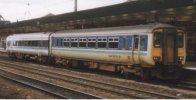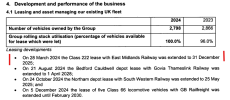Such trains give rise to a high proportion of overtime working and they depend upon the availability of reserve coaching stock which is expensive to supply, maintain, and assemble, and which is idle for most of the year. The extent to which reserve stock has been held to cover peak demands in the past, and its gross under-utilisation, is shown by the following table, which relates to 1959:- Total number of gangwayed coaches allocated to fast and semi-fast services . . . . . . . . . . . . 18,500 Number in year-round service . . . . . . . . . . 5,500 Additional vehicles for regular summer service . . . . 2,000 Available for high peak service . . . . . . . . 8,900 , Under repair . . . . . . . . . . . . . . 2,100 ‘



